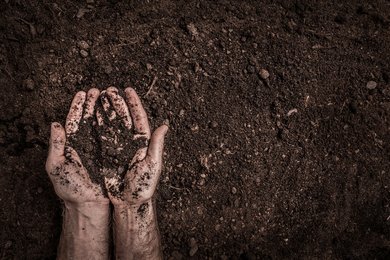When to Use Fish Soil?

If you’re into gardening, you will notice how many types of soils and fertilizers are available on the market. Each fertilizer has its specific benefits and characteristics to nourish your plants or to provide healthy soil for specific plant types.
One you may not have heard of yet is fish soil. We will explain some of the properties of fish soil and how to use fish soil to optimize plant growth and health.
Where Does Fish Soil Come From?
Fish soil has been used for centuries as a fertilizer. The first ways of using fish as fertilizer was by literally placing small fishes in the soil, which decomposed during the growing season. After decomposing, the fish fed the crops until harvest. That’s the foundation for the way we use fish soil in modern days, but luckily the fishes have already been composted, so you don’t have to deal with the fish odour in your garden and your crops can benefit from the nutrients immediately.
The Benefits of Using Fish Soil
Fish soil is rich in:
- nitrogen
- phosphorus
- potassium
- calcium
- sodium
- magnesium
- sulphur
- chlorine
These characteristics make fish soil a great source of nutrients for leafy green veggies, lawns, and many other kinds of plants.
How to Use Nurseryland Organic Fish Soil?
Nurseryland Organic Fish Soil is a high-quality premium blend of composted fish and peat moss that you can use for trees, shrubs, bedding, and vegetable plants. It’s a great way to moisten container plants and rejuvenate tired soil. If you’re transplanting trees or shrubs, you can give your transplanted plants a boost in their new spots. This enables plants to find all the nutrients they need to overcome transplant shock. You can use fish soil for multiple goals in the following ways:
- For planters and pots: first, partially fill the container with fish soil, fill around the plant root ball to within 1 centimetre of the container top. Refill with soil if necessary and water thoroughly.
- Flower and vegetable gardens: spread 2 to 5 centimetres over the specific area and gently work it into the existing soil. Water thoroughly.
- Trees and shrubs: make a hole that’s 3 to 5 times the size of the plant root ball. Mix with an equal amount of soil and replace all around, below, and on top of the root ball. Water thoroughly afterwards.
- Dressing established lawns: spread on the existing lawn without completely burying it, rake in gently, and water thoroughly.
- New lawns: spread 2 to 5 centimetres of the soil over the area, and add grass seeds as directed. Keep it moist until germination is complete.
Find Out What Fish Soil and Fertilizers do for Your Garden
As fish soil is suitable for almost all kinds of plants, it’s easy to try it out and see the effects it has on your garden. Make sure to check the guidelines for different kinds of plants to use fish soil correctly and watch your plant grow like never before. There’s no harm in transplanting anymore and changes in climate will no longer influence plants as it did before.
More advice on finding the right soils & fertilizers?
We’re happy to give you more tips and advice about plant care and gardening. Come visit us soon!
